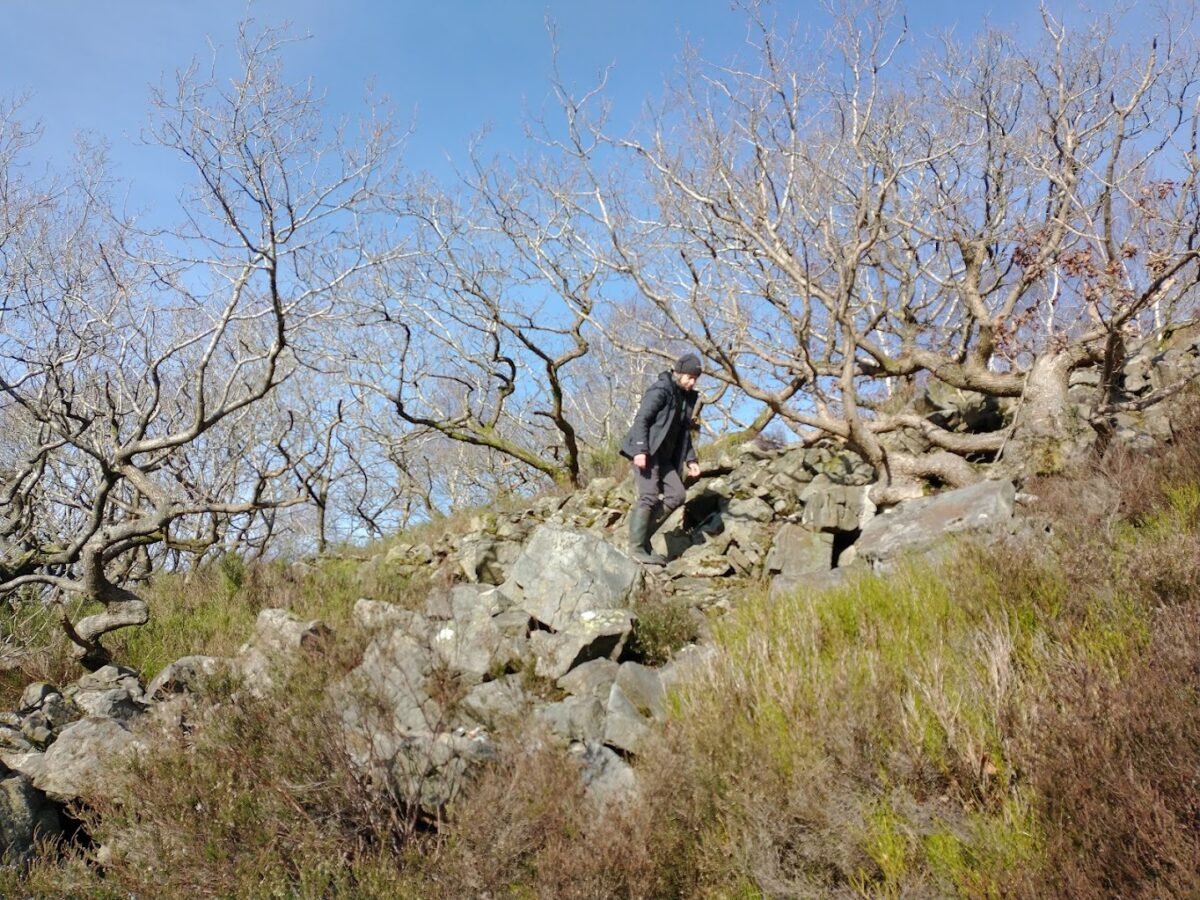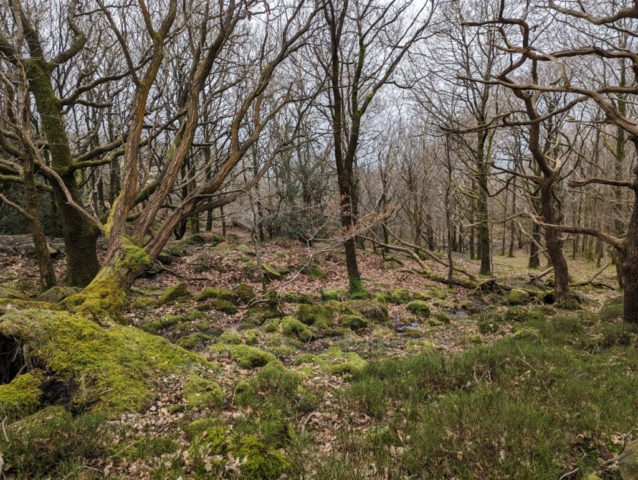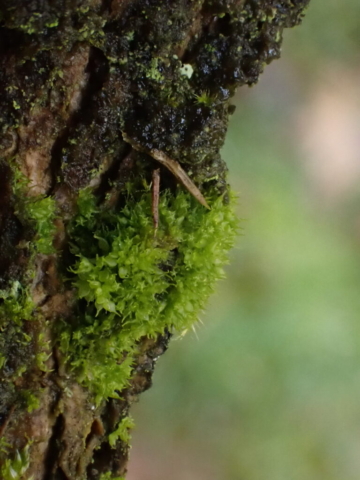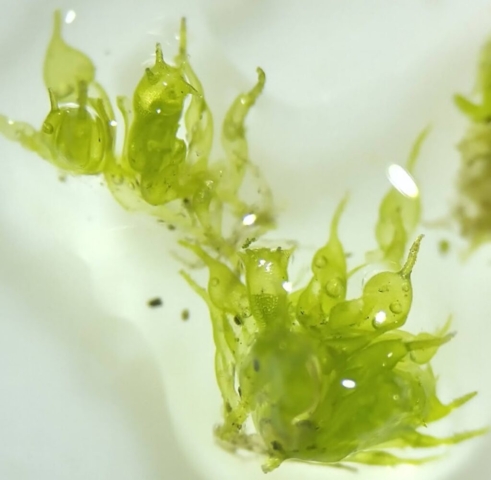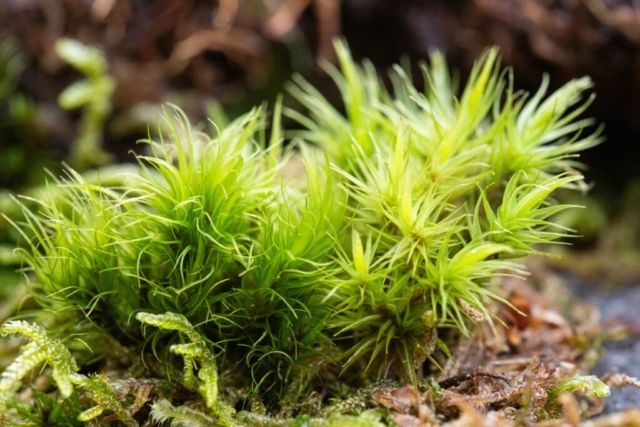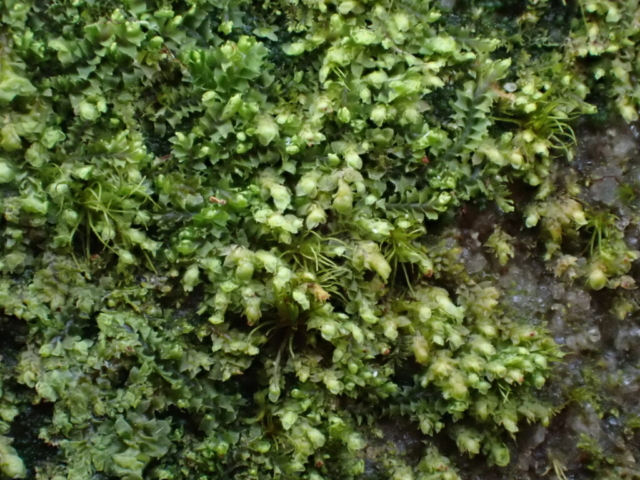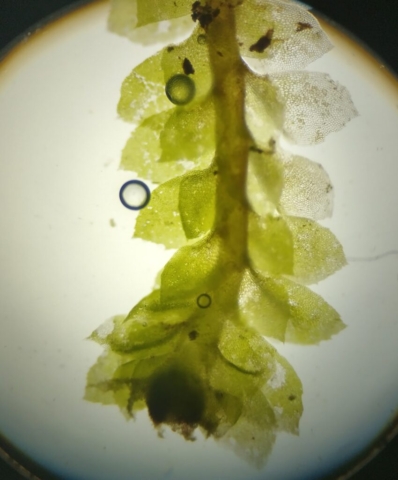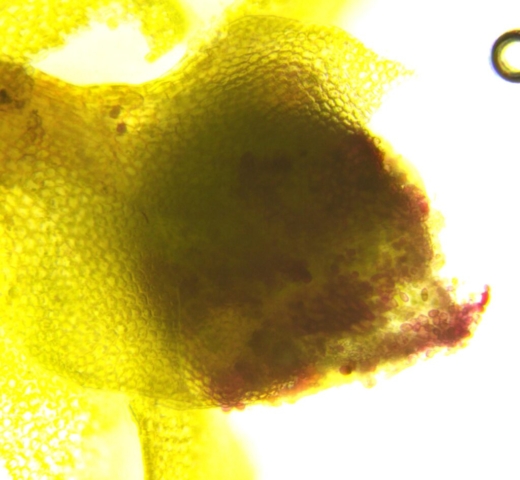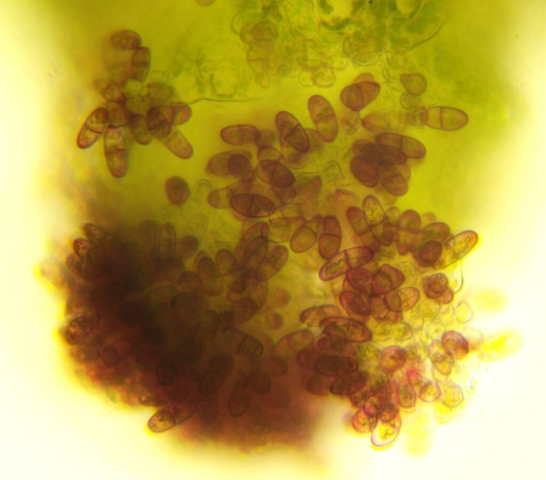Three of us from CLBG (joined by David Shaw, a new member from Silverdale) ventured into new territory with a trip to Birk Bank, on the slopes of Clougha Pike in VC60 (Lancashire!). Paul Ross had previously visited the site, finding Colura calyptrifolia and Lepidozia cupressina, and thought it warranted further exploration. With woodland, quarries, block scree, a stream and flushes, the target monad had a good range of habitats. The underlying geology is acidic gritstone, but there was clearly some base-rich influence coming from somewhere as the flushes had various calcicole species, further increasing the range of species.
From the car park on Rigg Lane, we followed a dilapidated boardwalk around a mire and a path up into woodland, where we started recording. A stand of gorse had some fine patches of Colura calyptrifolia with starry perianths, while the mature oak trees had Cryphaea heteromalla, Metzgeria furcata, M. violacea and M. consanguinea, Microlejeunea ulicina and Cololejeunea minutissima, Ulota phyllantha and Orthotrichum pulchellum. Heading uphill, the edges of a flush had Sphagnum denticulatum and S. palustre, with Odontoschisma sphagni seemingly growing directly in the flush. Tree stumps had good quantities of Tetraphis pellucida, Lepidozia reptans and Barbilophozia attenuata, and further up the slope was Bazzania trilobata. The woodland gave way to a large area of block scree, and here Kerry found a good patch of Lepidozia cupressina, at a different location to that found previously by Paul. On the way down, an undercut with expanses of bare soil had some bluish looking Calypogeia which disappointingly turned out to be C. fissa, and Dicranella heteromalla. Elsewhere, Calypogeia arguta and C. muelleriana were also found. At the base of the slope were several base-rich flushes, with Palustriella commutata, Pellia endivifolia and P. epiphylla, Dichodontium pellucidum and a small, light green Dichodontium which under the microscope showed all the characteristics of D. flavescens. The edge of a small stream had Riccardia multifida, with a small, interesting looking Fissidens growing through it, which was later identified by Sharon Pilkington as probably an atypical F. adianthoides. We had lunch on the banks of the main stream through the woodland, where Hyocomium armoricum was growing thickly.
After lunch, we followed the stream up into open hillside, where large boulders on the bank were thickly covered with Scapania umbrosa and Tritomaria exsectiformis, then took a path over a stile to further areas of scree and a north-facing slope where Mylia taylorii was growing. At that point we decided to call it a day, as we had plenty of species to take home and check. The final species list was tantalizingly close to 100 at 97. Perhaps we should just check through those packets again in case we missed anything … A return visit to other parts of the monad or adjacent squares would surely be worthwhile.
Text: Clare Shaw. Photos: Clare Shaw and Paul Ross
